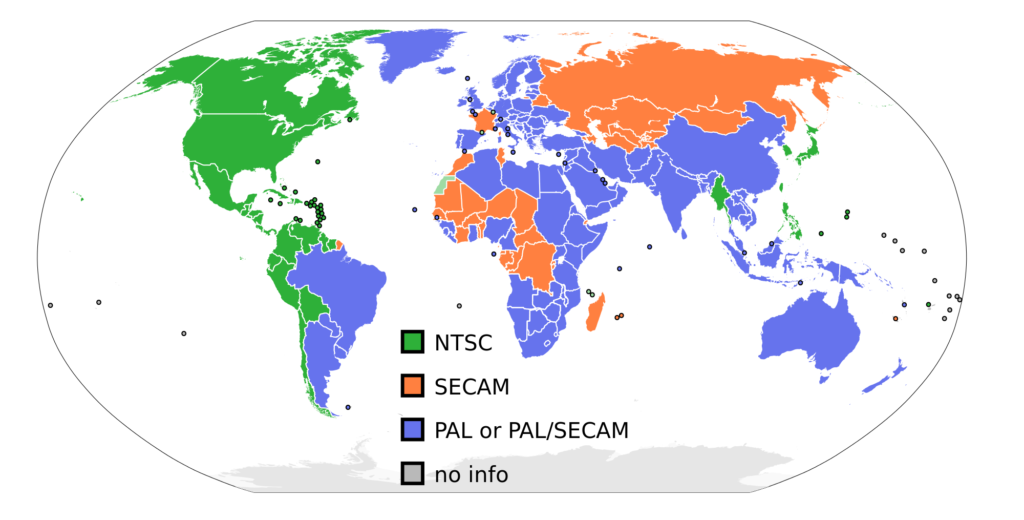Table of Contents
Various Video Standards PAL and NTSC
PAL (Phase Alternating Line) and NTSC (National Television System Committee) are two of the most widely used analog television broadcasting standards. They define how video signals are transmitted and displayed, and they have distinct characteristics, advantages, and limitations. Here’s a brief overview of each standard:
NTSC (National Television System Committee)
Definition: NTSC is an analog television broadcasting standard developed in the United States in the 1940s. It was the first widely adopted color television standard.
Key Features:
- Frame Rate: NTSC operates at a frame rate of 29.97 frames per second (fps), which is often rounded to 30 fps for simplicity.
- Resolution: The standard resolution for NTSC is 720×480 pixels (for standard definition).
- Color Encoding: NTSC uses a color encoding system that combines luminance (brightness) and chrominance (color information) to transmit color signals.
- Geographic Use: Primarily used in North America, parts of South America, and some Asian countries.
Advantages:
- Smooth Motion: The higher frame rate allows for smoother motion in video playback, which is beneficial for fast-moving content.
- Established Standard: NTSC has been a long-standing standard, making it compatible with a wide range of devices and broadcasts.
Limitations:
- Color Issues: NTSC can experience color fidelity issues, particularly in low-light conditions or with certain types of displays.
- Limited Resolution: As technology has advanced, NTSC’s standard definition resolution is considered low compared to modern digital standards.
PAL (Phase Alternating Line)
Definition: PAL is an analog television broadcasting standard developed in Germany in the 1960s as an improvement over NTSC, particularly in terms of color stability.
Key Features:
- Frame Rate: PAL operates at a frame rate of 25 frames per second (fps).
- Resolution: The standard resolution for PAL is 720×576 pixels (for standard definition).
- Color Encoding: PAL uses a color encoding system that alternates the phase of the color signal, which helps reduce color distortion and improve color stability.
- Geographic Use: Widely used in Europe, Australia, parts of Asia, and Africa.
Advantages:
- Better Color Stability: The phase alternation in PAL helps maintain color accuracy and stability, reducing issues with color distortion.
- Higher Vertical Resolution: PAL’s higher vertical resolution (576 lines) provides better detail compared to NTSC.
Limitations:
- Lower Frame Rate: The lower frame rate can result in less smooth motion for fast-moving content compared to NTSC.
- Compatibility Issues: Devices designed for NTSC may not be compatible with PAL broadcasts, leading to potential playback issues.
Summary Table
Feature | NTSC | PAL |
Frame Rate | 29.97 fps (approximately 30 fps) | 25 fps |
Resolution | 720×480 pixels (standard definition) | 720×576 pixels (standard definition) |
Color Encoding | Luminance and chrominance combined | Phase alternation for color stability |
Geographic Use | North America, parts of South America | Europe, Australia, parts of Asia, Africa |
Advantages | Smooth motion, established standard | Better color stability, higher vertical resolution |
Limitations | Color fidelity issues, limited resolution | Lower frame rate, compatibility issues |
Conclusion
Both NTSC and PAL have played significant roles in the history of television broadcasting. While NTSC is known for its smoother motion, PAL offers better color stability and resolution. With the transition to digital broadcasting and high-definition formats, these analog standards are becoming less common, but they remain important in understanding the evolution of video technology.
You May Like to Browers More





